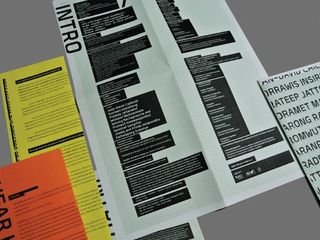Content strategy 101, Part 4: bringing your content to life
In the last of a four-part series of articles, Sandi Wassmer finds that interdisciplinary collaboration makes the most of your content
This article first appeared in issue 237 of .net magazine – the world's best-selling magazine for web designers and developers.
In my previous articles, I looked at why you need a strategy for managing the content that goes to make up a website, and how to begin developing one. This issue, I’d like to look at the people you will need to involve in that process. However digital teams are configured – internal, external or a combination of both – the core disciplines of design, development and marketing remain. All three play key roles in each stage of the process, but the balance will differ from team to team and project to project.
When deciding who will be on your team, look beyond job titles: roles and responsibilities vary widely. The titles listed below seem to be commonly understood – but there are no absolute conventions quite yet. As the industry matures, job roles will morph and mutate, so this list is likely to evolve.
Marketing, communications and PR
Digital marketing now includes a range of discrete disciplines. Here are some of them most common:
- Digital marketing
- User experience
- Content strategy
- Online PR
- Social media marketing
- Copywriting
- Search marketing
- Market research

Designers of many disciplines
It has been generally accepted that web designers must have a solid foundation in graphic design in order to create on-brand content. But as websites have evolved from veritable online brochures towards fully fledged interactive products, web design has developed greater affinity with industrial design or architecture. Not only do you need to consider what a website looks like but also how site visitors, using a near-endless range of platforms and devices, will consume its content. As such, the field of web design has been split up into a larger set of individual disciplines:
- Visual design
- User interface design
- Information architecture design
- Interaction design
Devs of all shapes and sizes
The days when web developers were banished to the backroom to code are long gone. While it may not be their natural habitat, developers are front and centre when it comes to content. If developers are not involved in planning content strategy, our beloved content may never make its way to a particular browser or mobile app. Although to many developers, content may just be data, everything that happens to, within and around that data is ultimately their responsibility.
Key disciplines within the wider field of web development include:
- CMS development
- Database development
- Client-side scripting
- Server-side programming
- Web applications development
- Mobile applications development
But let’s not get too hung up on job titles. What matters is that you are reading this article, which means that there is already a move towards integrated, interdisciplinary collaboration.

The transition may not always be smooth: marketers and designers regard one another with a degree of mutual suspicion, and bringing developers to the party may complicate things further. But hopefully, an increasingly multidisciplinary approach will lead to an environment in which all members of digital teams approach content together. It is both the meat and the bones, after all.
Get the Creative Bloq Newsletter
Daily design news, reviews, how-tos and more, as picked by the editors.
Information architecture: an aside
The structure and management of content, data, information – or however you choose to refer to it – is the key to your digital offering’s sustainability. Handle it with care.

I will leave the debate about exactly who is responsible for structuring the data to one side here. Instead, let’s just note that the term ‘information architecture’ covers a wide range of activities; and that there is considerable crossover, not only between individual disciplines, but with design and development – and even the role of content strategists themselves.
A preliminary roll call of information architecture disciplines could include:
- User interface design
- Content classification
- Content management
- Asset management
- Metadata management
- Analytics management
And remember: creating great content requires lots of communication. If interdisciplinary teams understand each other, and you don’t run for the hills when marketing folk start talking about economies of scale and cost efficiencies, you will be able to create wonderful content together.
Plan and schedule activity
Before we conclude this series of articles, I want to look at some of the logistical issues that relate to implementing an effective content strategy. The workflow and scheduling processes are the same as that of design. You will need to use whatever resources you have; whatever you need to source. You will need to determine dependencies and interdependencies, and make sure you have made contingencies and can accommodate change.
Goodbye to old content (for now)
Just because you’ve been brutally honest when assessing your content, this doesn’t mean it should be put out to pasture. Make sure that you archive old content with the same care and attention you pay to new content. Make it easy to bring it out of retirement; it might not be in line with current strategy – but it could be in the future.
Make architecture work for you
If you were to bring content and user interaction to life and put them in a house together, it would be like living with an interior designer – someone constantly buying new ornaments and moving the furniture around. The design of the building itself wouldn’t be affected, and nor would its structural integrity, but the interior would constantly change. You should apply the same concepts to the web. Users should be free to interact with content without disturbing design or structure.
Fortunately, a clean semantic structure is now a given for modern web projects. Integrating metadata and taxonomies helps make it possible for everyone involved in creating content to maintain it, enabling users to find what they are looking for and complete tasks quickly and efficiently.
It is vital that each and every user interaction is valuable for both parties in the relationship. If, for example, you decide to open up tagging on user-generated content, make sure that this is effortless for the user and that your system can process new metadata within its taxonomy in a meaningful way.

Creativity from constraint
Once all the planning has been done, it’s time to get creative. Although it may seem that the requirements of content strategy are constraints, they are actually opportunities. Gone are the days of pixel perfection. Instead, making content fitting, intuitive and responsive is the order of the day.
The rapid maturation of technologies such as JavaScript make it possible to access content in new ways, while the features being implemented in HTML5 will do a lot of the thinking and decision making for you. Some pretty awesome techniques – such as CSS3 media queries – are coming into their own, so the technology is there for you to explore.
Content is here to stay
When the web hit the ground running back in 1999, the phrase ‘content is king’ was used far too often by folk who didn’t really understand its meaning.
Despite that, the internet boomers were correct: content really is what matters. But this doesn’t mean that web design or development should play second fiddle. Integrating content strategy into the design and development process presents the perfect opportunity for everyone to get involved.
With mobile platforms starting to take centre stage, making users more time-constrained and task-driven than ever before, there is a smorgasbord of opportunities for creating the right content to meet your organisation’s multifaceted objectives, and to serve users’ complex and ever-changing needs. But don’t bite off more than you can chew – the complexity of each project you create will only increase in future.
And, of course, the life cycle of content is circular: you will always be part of its continued development, and you will always be learning. If you take only one thing from this guide, I hope it’s that you can always improve the way in which you work. Please take the time to reflect, and share what you have learnt with your team.
Now it’s over to you
So now it is over to you to take all of the information that has been presented in this series of articles and do something inspiring with it.
Effective creation, collation, distribution and maintenance of content requires the combined might of the full digital team – and then some. But the results are worth it.
Embracing content strategy will give your work more depth and relevance, and if you do it right, new meaning will emerge from the process.
So design a findable, beautiful, usable and accessible website for your target users – and don’t forget to have fun.
Content strategy 101
Part one: Giving context to your content
Part two: Making data meaningful
Part three: Put knowledge into action
Part four: Bringing your content to life
Mobile website design: discover 30 pro tips at Creative Bloq.

Thank you for reading 5 articles this month* Join now for unlimited access
Enjoy your first month for just £1 / $1 / €1
*Read 5 free articles per month without a subscription

Join now for unlimited access
Try first month for just £1 / $1 / €1
The Creative Bloq team is made up of a group of design fans, and has changed and evolved since Creative Bloq began back in 2012. The current website team consists of eight full-time members of staff: Editor Georgia Coggan, Deputy Editor Rosie Hilder, Ecommerce Editor Beren Neale, Senior News Editor Daniel Piper, Editor, Digital Art and 3D Ian Dean, Tech Reviews Editor Erlingur Einarsson and Ecommerce Writer Beth Nicholls and Staff Writer Natalie Fear, as well as a roster of freelancers from around the world. The 3D World and ImagineFX magazine teams also pitch in, ensuring that content from 3D World and ImagineFX is represented on Creative Bloq.
